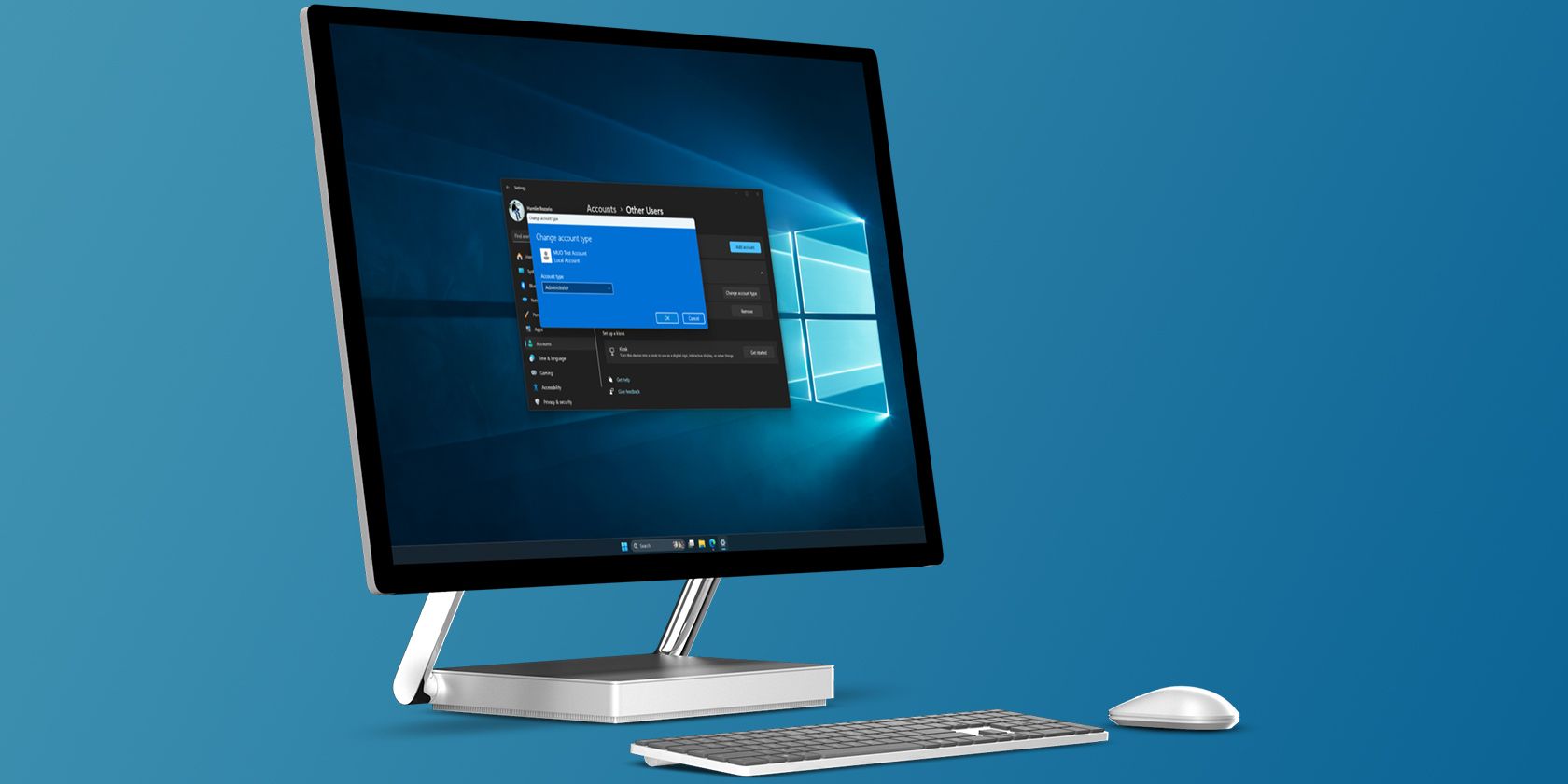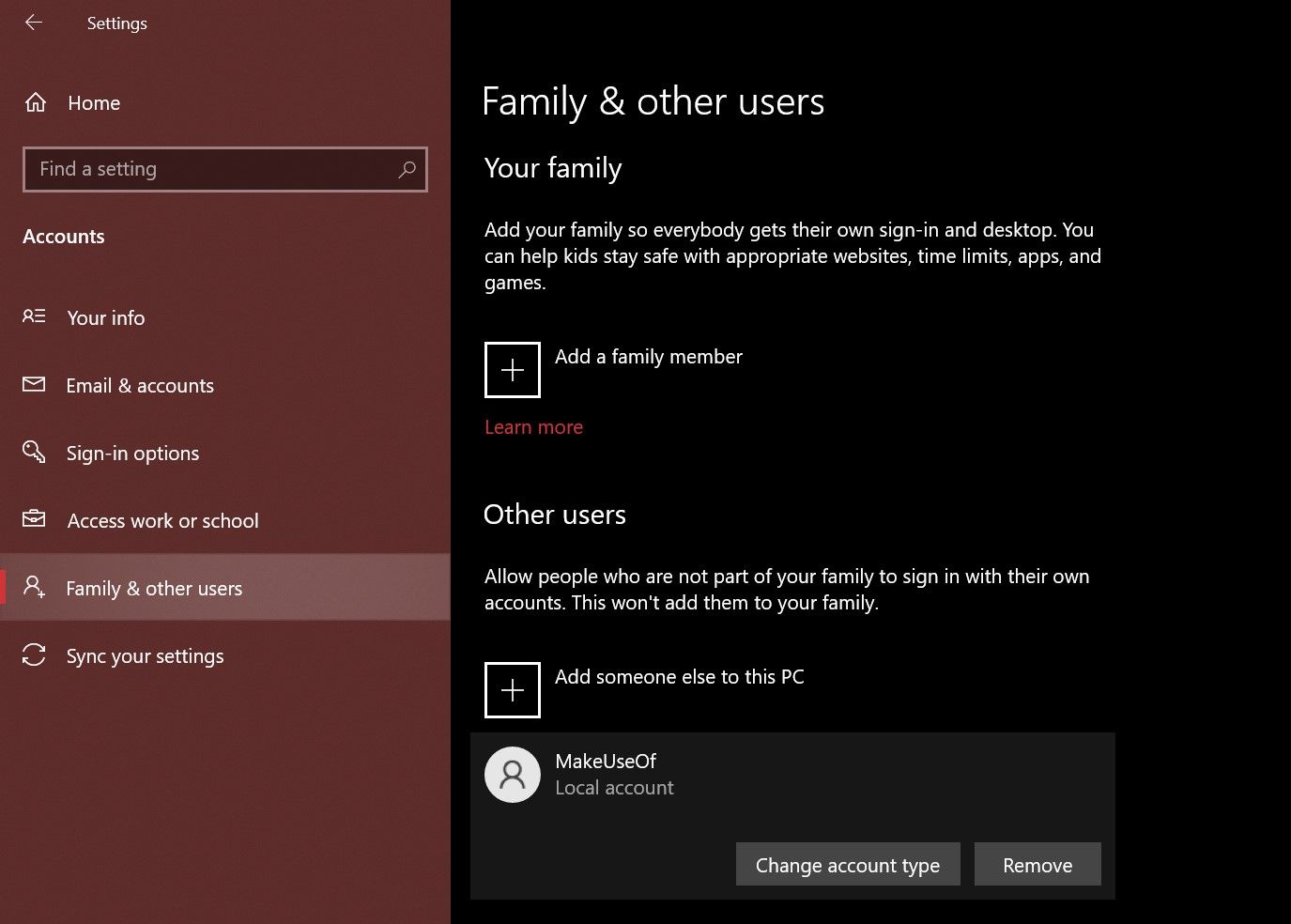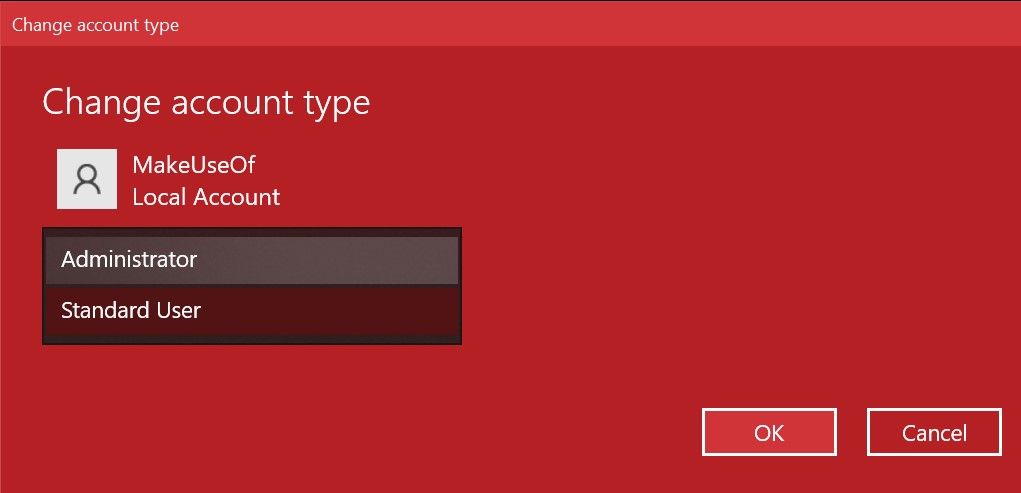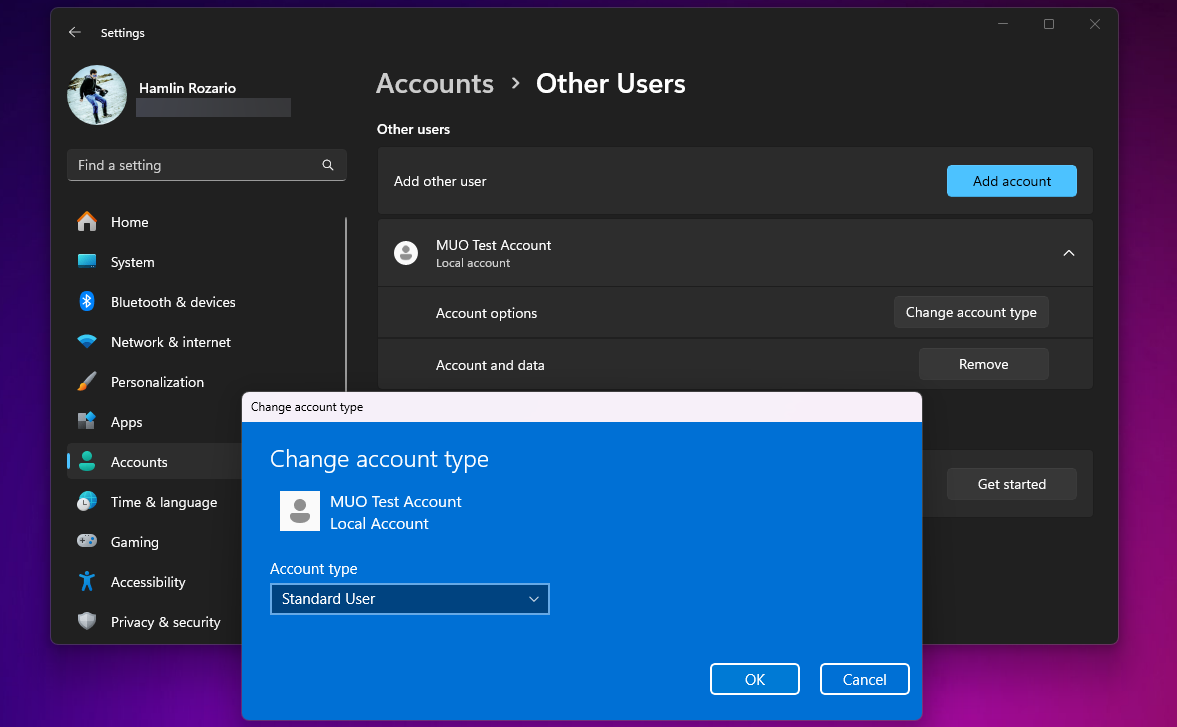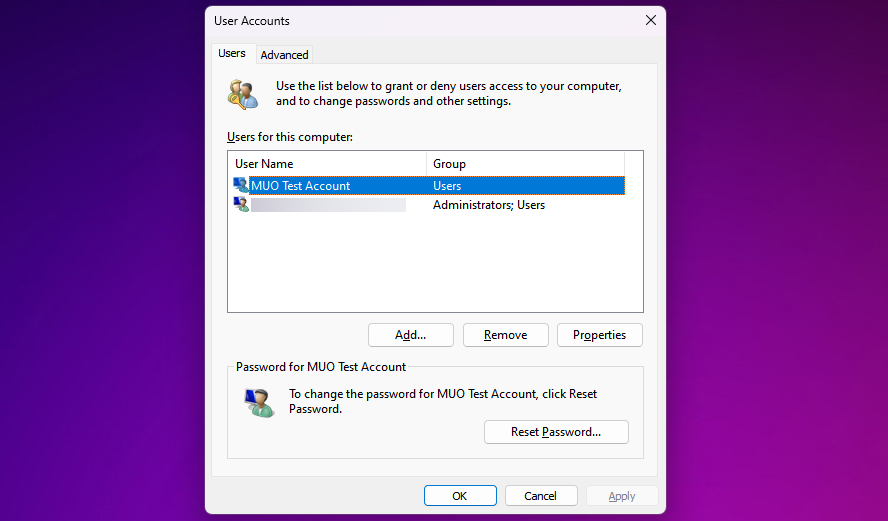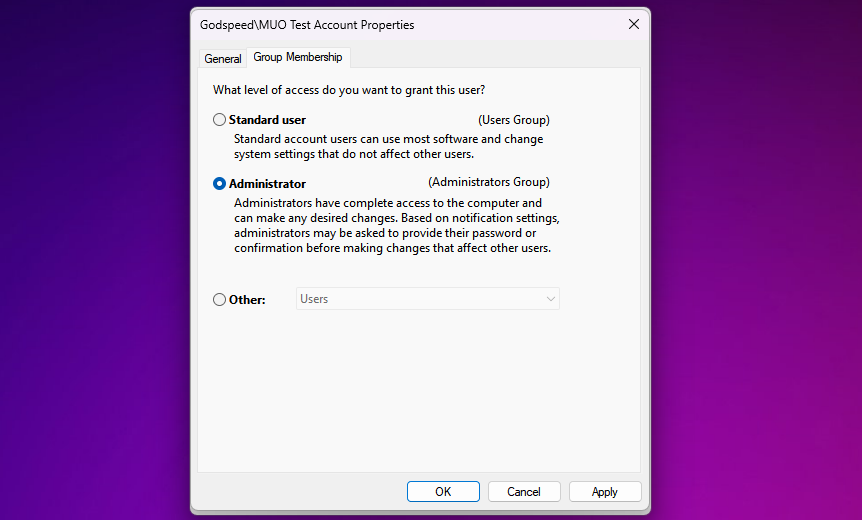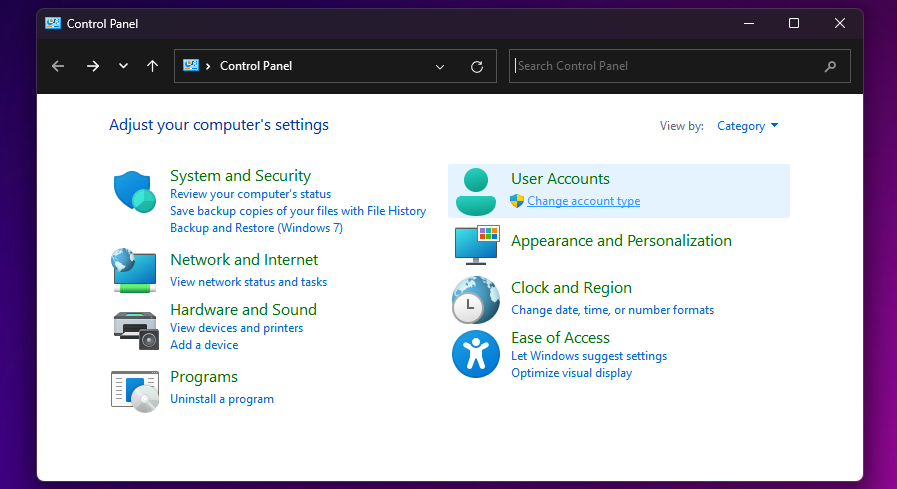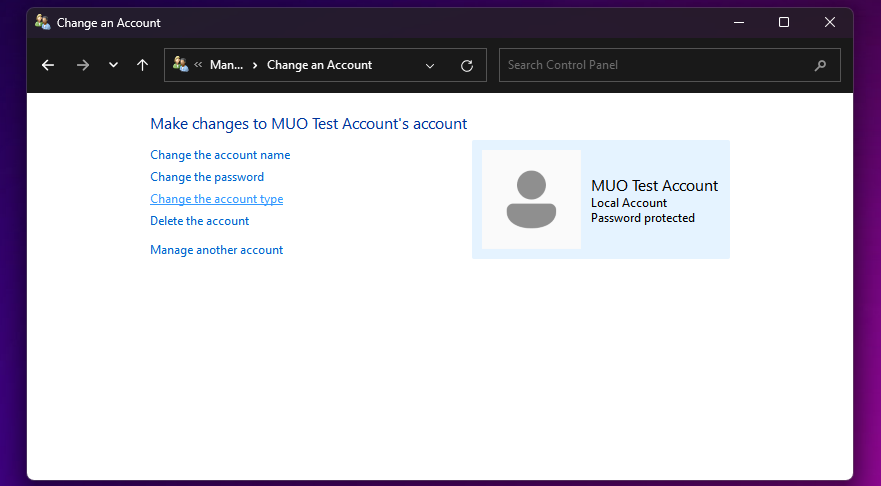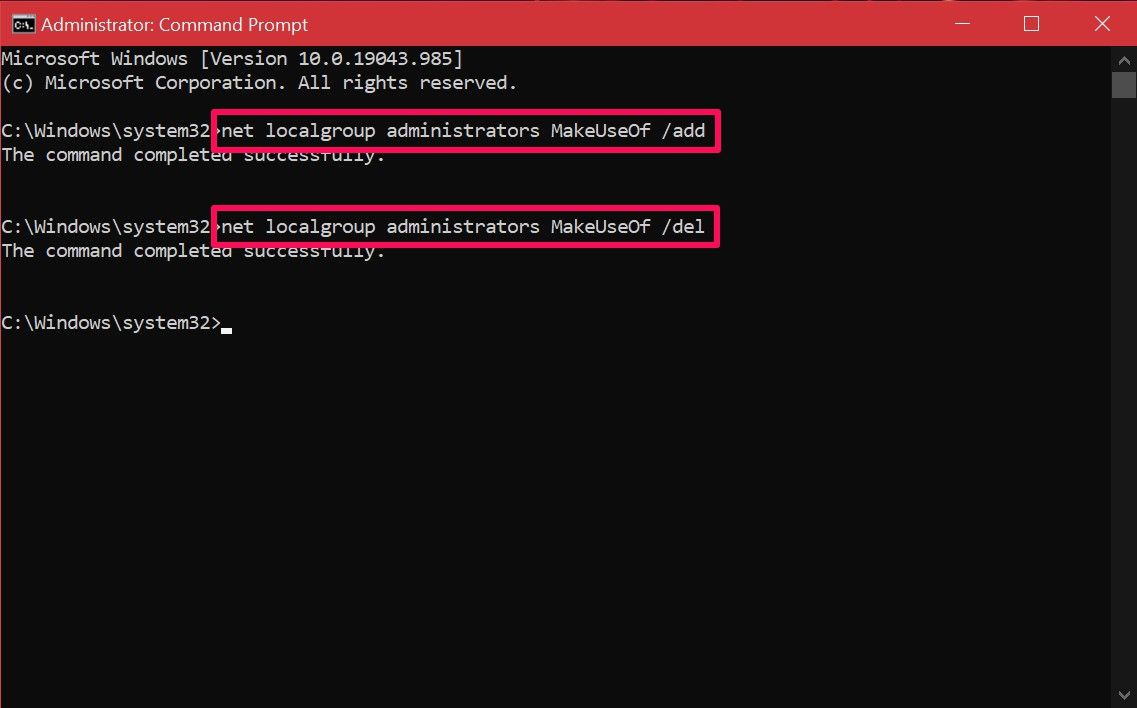Quick Links
Key Takeaways
- Administrator and Standard User are the two main account types on Windows PCs. The former gives you admin privileges, whereas the latter has limited access.
- Using the Settings app on Windows is the most straightforward way to switch between the Administrator and Standard User account types. However, Netplwiz gives you access to more hidden account types.
- You can also quickly grant or revoke admin rights for a Windows account by typing a simple command in Command Prompt.
If you created multiple user accounts to share your computer, you may want to change the account type for other users from Administrator to Standard User to limit their access. We'll walk you through the steps to do so on both Windows 10 and 11.
Standard User vs. Administrator on Windows: What's the Difference?
An Administrator account gives you unrestricted access to everything on your system. In contrast, you cannot use a Standard User account to manage system files or install any new applications on the computer.
The differences between Standard and Administrator accounts don't end there. Existing programs that require administrator privileges cannot be operated with a Standard account, either. You cannot adjust any setting that affects the whole PC, like creating a new user account.
When you're sharing your PC with someone else, it's reasonable to have these restrictions in place. Of course, if you trust them enough, you can grant admin rights to their Windows 10 or 11 account too.
Any additional users that you create in Windows are standard accounts by default. It's easy to check if a Windows account has admin rights. However, as long as you're logged in as an administrator, you can provide elevated permissions by simply changing the account type.
1. Use Settings to Change Administrator or Standard Account on Windows
The Settings app in Windows is the go-to destination to personalize your computer. It gives you access to most of the basic settings you need, unlike the Control Panel, which can overwhelm new users. So, this method is preferable for quickly changing from Administrator to Standard account (and vice versa) on Windows 10 or 11.
Follow the steps below on a Windows 10 PC. If your PC runs Windows 11, you can skip to the next set of instructions:
- Press Windows + I on your keyboard to open the Settings panel.
- Next, head to Accounts > Family & other users.
- Look under Other users and select the account for which you want to change privileges. Now, click Change account type.
- You'll get a pop-up on your screen showing the current permissions of the selected user account. Click on it and choose either Administrator or Standard User.
- Now, click OK to apply these changes.
The steps you must follow on a Windows 11 PC are similar, but the Settings app's user interface is quite different. Here's what you need to do:
- Press Windows + I on your keyboard or search for "Settings" to launch it.
- Select Accounts from the left sidebar. Then, scroll down and click Other users on the right.
- Click the dropdown next to the local account to access more options and choose Change account type.
- When you get a pop-up, click the dropdown below Account type and choose between Administrator and Standard User.
If the other account is part of your family group, you'll need to head to Settings > Accounts > Family instead of Other users and repeat the rest of the steps to do the same. Also, consider going through our fixes if you can't set your Windows account as Administrator.
2. Use Netplwiz to Change Administrator or Standard Account on Windows
Netplwiz is a dedicated panel for managing all the user accounts on your computer. It's a system executable you can only access if you're signed in as an administrator. Back when Windows didn't have a dedicated Settings app, Netplwiz was a popular choice for switching between account groups, i.e., Standard User and Administrator.
- Type netplwiz in the Start menu search field and click the best match to open the User Accounts panel. Here, you'll see all your user accounts.
- Double-click on the account for which you want to change privileges.
- Now, head to the Group Membership tab in the new window, and you'll find the available account groups. Select your desired choice and click Apply.
Unlike the Settings app, Netplwiz displays a third option that further expands the account types. These are for very specific permissions that you'd like to grant the other user.
For example, you can select the Power Users option, which gives the account limited administrative powers. Or, you can choose Guest if you want Windows to restrict them even further than a Standard User account does.
3. Change Administrator or Standard Account From the Windows Control Panel
The Control Panel has been an integral part of Windows for as long as one can remember. It was the de facto settings panel for Windows computers until the introduction of the dedicated Settings app in Windows 10.
It still has its place since you can use it to make advanced system-level changes that the Settings app cannot currently complete. Follow these instructions to learn the old-school way of changing administrator settings on Windows:
- Type Control Panel in the Start menu search bar and click the Best Match.
- Select Change account type under the User Accounts section (this option has a shield icon).
- Next, select the account you want to change the permissions for. You'll have multiple options for the selected account. Click Change the account type to continue.
- Select one of the two options, then click Change Account Type to apply the changes.
You may be familiar with all these menu items if you've used legacy versions of Windows. Regardless, it's mostly a straightforward process.
4. Use Command Prompt to Change Windows Administrator Settings
Command Prompt, or CMD, is the built-in command-line interpreter on Windows PCs. You can perform various tasks on your computer using the right CMD commands.
While the program is a power user's paradise, you don't need coding skills to change the Windows administrator settings with a simple command:
- Type Command Prompt or CMD in the Start menu search bar. Select Run as administrator instead of launching it directly.
-
To change the account type to Administrator, type the following command and hit Enter.
net localgroup administrators [USERNAME] /add -
To switch back to Standard User, use this line of code instead and press the Enter key.
net localgroup administrators [USERNAME] /del
If you get an error saying access is denied upon executing the command, chances are you aren't running CMD as an administrator. As long as you know this command, you don't have to fiddle with system menus like the other methods. Hopefully, you're able to get the hang of it quickly.
As you can see, you're not limited in terms of options. Now that you're familiar with all the various methods, it's up to you to try them out individually and find the best one. Some users may prioritize the Netplwiz method since it allows them to fine-tune the permissions further, whereas others would be more than happy with any of these methods.

